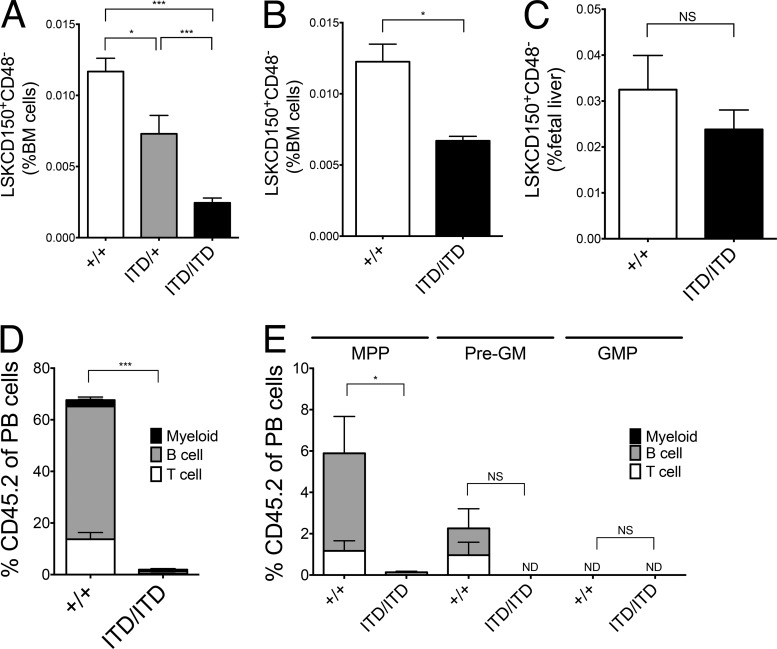Figure 2.
Flt3-ITDs cause gene dosage–dependent and progressive suppression of BM HSCs. (A) Gene dosage–dependent reduction in LSKCD150+48− cells in 8–10-wk-old Flt3+/+, Flt3ITD/+, and Flt3ITD/ITD mice (+/+, n = 31; ITD/+, n = 14; ITD/ITD, n = 23). (B) Reduction in LSKCD150+48− cells in 2-wk-old Flt3ITD/ITD mice (+/+, n = 4; ITD/ITD, n = 6). (C) Numbers of phenotypic (LSKCD150+CD48−) HSCs in E15 FL from Flt3+/+ and Flt3ITD/ITD mice (+/+, n = 8; ITD/ITD, n = 9). (D) Percentage CD45.2 chimerism in peripheral blood of recipient mice 16 wk after transplantation of 500,000 unfractionated CD45.2 BM cells and 200,000 CD45.1 WT competitor cells (eight to nine recipients per genotype in three experiments). (E) Percentage CD45.2 chimerism in BM of recipient (CD45.1) mice 16 wk after transplantation of 5,000 CD45.2 MPPs (LSKCD150−CD48+), pre-GM (Lin−Kit+Sca1−CD41−CD16/32−CD150−CD105−), and GMPs (Lin−Kit+Sca1−CD41−CD16/32+) together with 200,000 CD45.1 WT BM competitor cells (eight to nine recipients per genotype in two experiments). Data are shown as mean (SEM) values. *, P < 0.05; ***, P < 0.001 by t test. NS, not significant.

